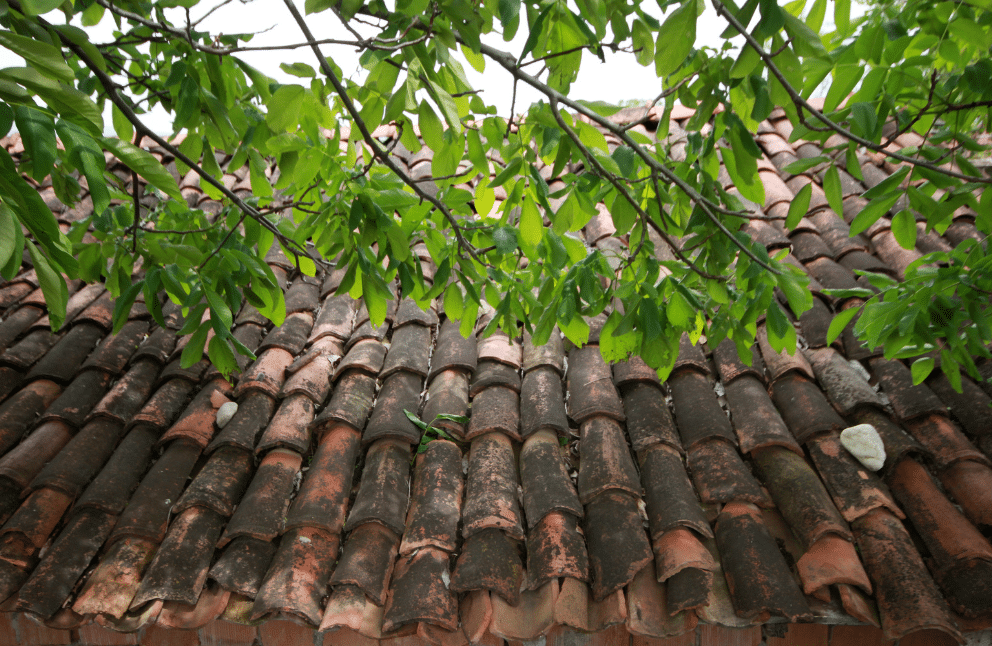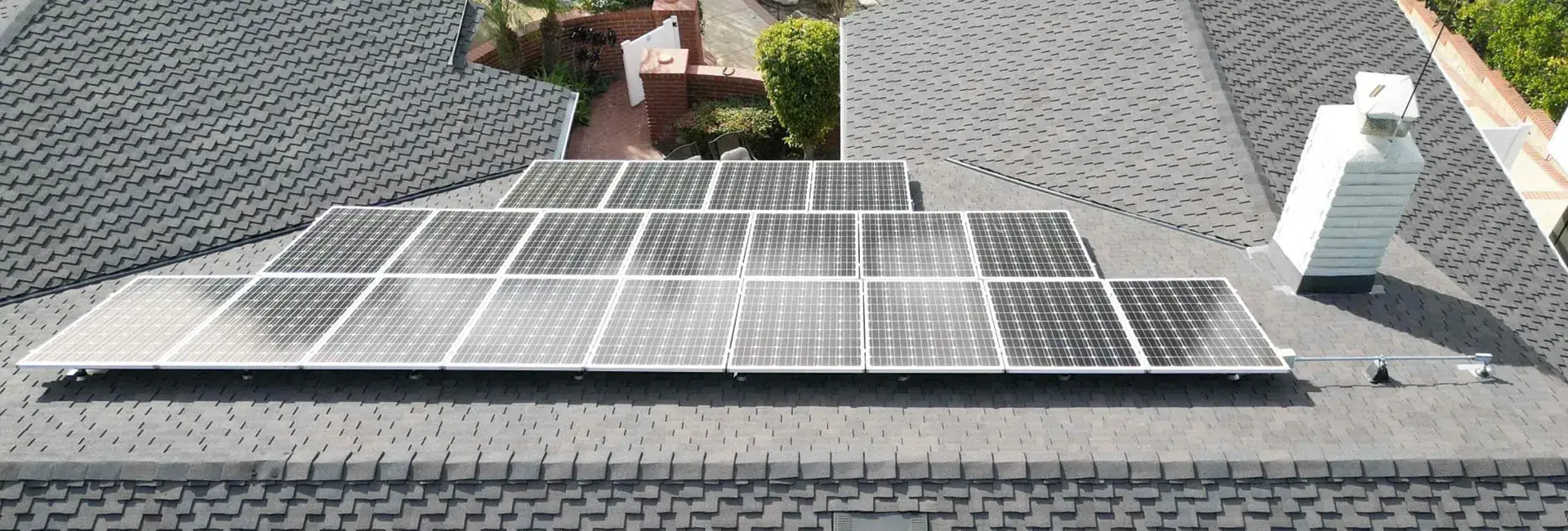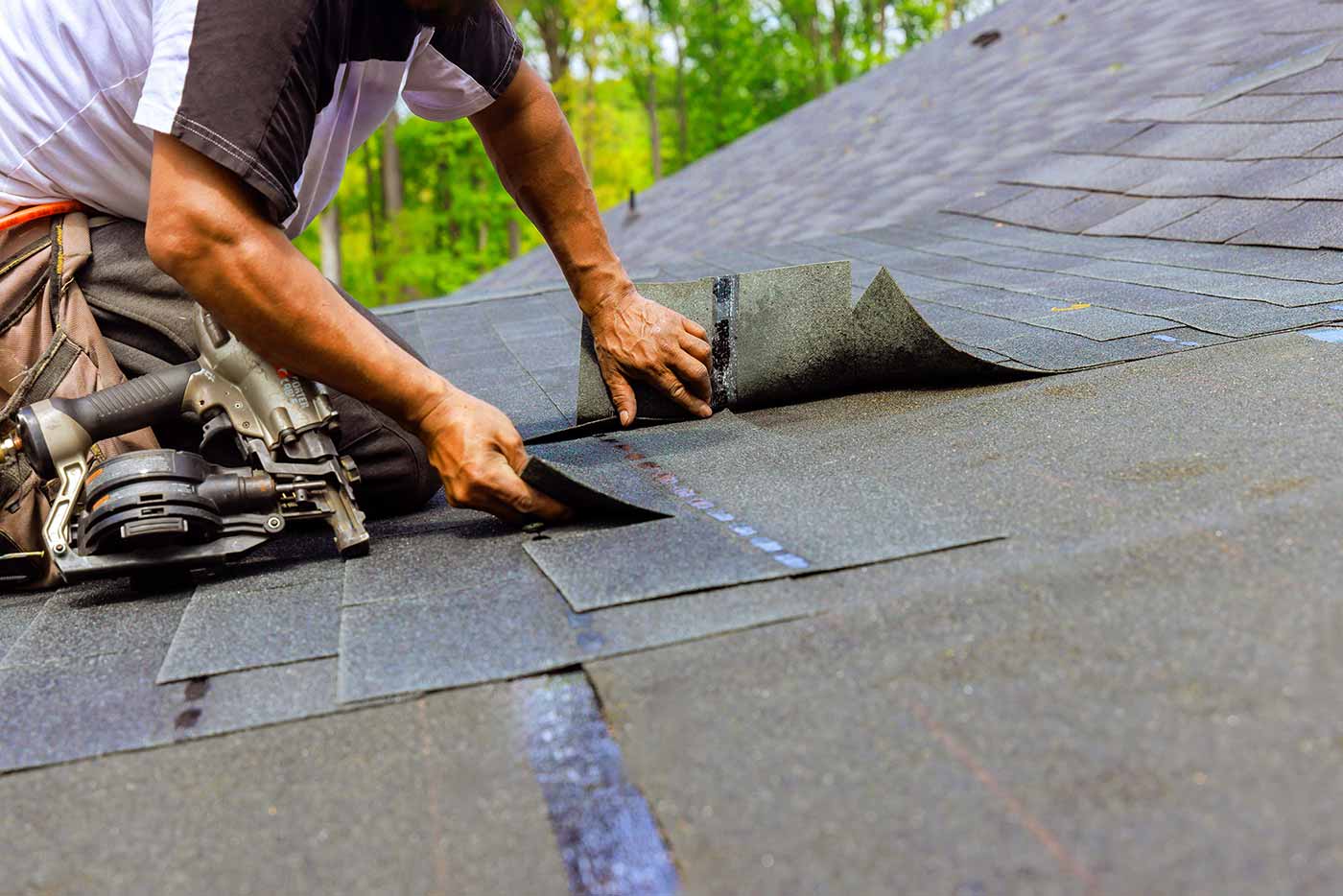While roof leaks are a common concern, the right preventative roof knowledge and maintenance can prevent water from infiltrating your home, leaking from your ceiling, and pooling on your floors. Learn how to spot and prevent roof leaks and when to call LocalRoofs for support.
Top Causes of Roof Leaks and How to Avoid Them
Roof leaks can occur from a single event, but more often, they’re the result of age, poor maintenance, or improper installation.
Missing or Damaged Shingles
Shingles are the outermost protective layer of your roof. Over time, age and harsh weather gradually deteriorate shingles, causing them to become cracked, brittle, dislodged, or otherwise damaged or missing.
Since shingles are a key component of your roofing system to prevent water from seeping into your roof’s structure, damaged or missing shingles leave your home vulnerable to water infiltration. This can compromise the structural integrity of your home and lead to water damage and other related issues.

Cracked or Worn Flashing
Flashing is protective rubber or metal material installed around the most vulnerable joint sections of your roof, such as chimneys, vents, or skylights. If the flashing becomes cracked, corroded, or otherwise aged and deteriorated, water can seep into even small cracks.

Poor Roof Ventilation
Roof vents, such as ridge, soffit, or gable vents, are necessary for proper temperature and moisture control. Poor roof ventilation installation or maintenance may result in water infiltrating your roof through the vent area.
Blocked or clogged vents can also lead to other roof problems. For example, trapped heat and moisture in your attic may encourage excessive condensation and accelerate shingle deterioration.
Clogged Gutters and Drainage Issues
While gutters are designed to channel water away from your roof and protect it and other structural components from leaks and water damage, they can be counterproductive if they become clogged. When twigs, leaves, and other debris clog gutters, water may pool and overflow. Clogged gutters act as a barrier that causes water to flow under the shingles.
Other drainage may also contribute to roof leaks, such as:
- Sagging gutters
- Undersized downspouts
- Water pooling on flat roofs or roof valleys
Signs Your Roof May Be Vulnerable to Leaks
Roof leaks can be discreet and damage parts of your home without detection, but most roof problems often show early warning signs. If your home has already experienced leaks without an obvious cause, your roof might be responsible — especially if they occur during or immediately after heavy rain.
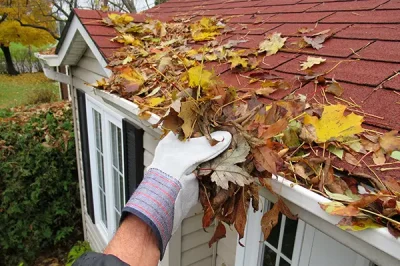
Discoloration or Stains
Brown or yellow stains on your ceiling and walls usually signal water leaks. Discoloration means that these leaks have already expanded beyond the roofing structure — if they continue to expand, the leaks and water damage are likely to worsen.
Other signs may accompany discolored walls and ceilings, including:
- Peeling or bubbled wallpaper or paint
- Warped or swollen wood floors
- Musty odors
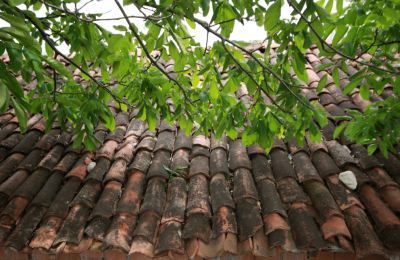
Sagging or Drooping Roof
A sagging roof may indicate a significant amount of water trapped in the structure. If enough water gets into the structure, it can soak into the insulation, compromise the rafters, and cause other damage. Look for noticeable dips or bulges in the roof structure, sagging or drooping in your ceiling, or cracks in the walls.
Moisture-Related Growth
Roof leaks may create damp and humid environments in your ceilings, walls, attic, and other areas throughout your home, which are ideal conditions for unwanted biological growth.
Dark or discolored patches don’t typically appear on the outer part of your roof, but they can develop on the underside of the sheathing — these potential moisture indicators may appear in various colors, shapes, and textures. Environmental growth often emits a musty odor, which becomes especially noticeable if it enters your HVAC system and circulates throughout your home.
Visible Roof Damage
Damaged or missing shingles are clear signs that your roof is vulnerable to water, but other visual signs may suggest that your roof needs attention. Look for these red flags:
- Holes or gaps in the roof’s surface
- Sunlight visible from the attic
- Algae or moss growth
- Exposed or rusted roof nails
Seasonal Roof Maintenance Tips to Prevent Leaks
Regular roof maintenance throughout the year is one of the best defenses against leaks. Try these seasonal roof waterproofing tips:
- Inspect after storms: After heavy storms, look for damage to shingles, flashing, and other roof penetrations. Ensure that the gutters and downspouts are in good condition and not bent, broken, dislodged, or otherwise damaged.
- Clean gutters and downspouts: Prevent debris buildup, clogs, and water backup by periodically cleaning gutters and downspouts. Aim for cleaning twice per year — homes with pine trees nearby may need more frequent gutter cleaning.
- Trim tree branches: Either in late fall or early spring, trim overhanging branches that could damage your roof or gutters if they fall. Additionally, wind gusts can cause these branches to whip against the roof and wear down shingles or break tiles over time. Look specifically for broken, diseased, dying, overgrown, or dead branches.
- Check for moss and algae: Especially in humid areas, check for and remove moss or algae growth in the spring and fall.
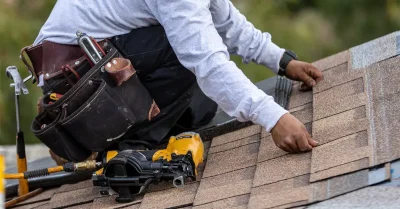
What to Do If You Notice a Leak
If you notice a leak, prompt action minimizes water damage. Follow these steps:
- Contain the leak: If possible, use buckets or towels to catch water and prevent pooling.
- Inspect the attic: Multiple leaks may stem from one main source. Inspect your attic for points of entry.
- Check gutters and downspouts: Inspect the gutters for blockages that may cause backflow and leaks.
- Call a professional: Contact a licensed roofing contractor to address the leak — roof damage assessment and repair should be left to professionals like LocalRoofs.
Long-Term Strategies for Leak Prevention
In addition to routine maintenance, long-term preventative roof maintenance strategies help keep your roof in good condition.
Schedule Regular Roof Assessment
Routine roof assessments by a professional identify underlying problems, such as damaged flashing or compromised shingles, before they lead to leaks or further damage. Plan for roof assessments once per year plus after severe weather.
Invest in High-Quality Roofing Materials
Choose roofing materials that offer high durability against the elements. Quality products may have higher upfront investment, but they can significantly reduce the risk of leaks and roof repairs. Ask your contractor about additional coatings and treatments to improve your roof’s waterproofing and longevity.
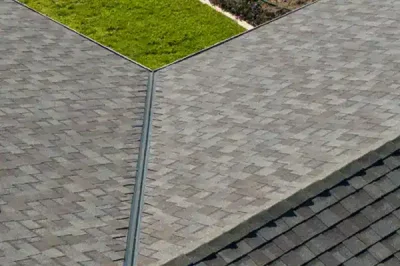
Upgrade Attic Insulation and Ventilation
Proper attic insulation, ventilation, and sealing regulate temperature and moisture. These elements help protect your home from condensation and other moisture-related problems.
Improve Drainage Systems
Upgrade or repair drainage systems to ensure that water flows away from your roof and foundation.
Trust LocalRoofs for Leak and Roof Repair Services
Don’t rely on tarps and buckets to handle your roof leaks. LocalRoofs can help keep your roof in good condition and assist with roof leak prevention — contact us or schedule online.
Thorough roof inspections, clearing debris, sealing flashings, and preventative repairs or re-roofing are key to making sure your roof survives whatever the rainy season brings this winter. Don’t wait – schedule necessary roof maintenance and repairs today! At LocalRoofs, we can provide an honest assessment of your roof’s condition and recommend solutions to keep your home and family protected. Contact us today to schedule your free, no-obligation roof diagnostic and estimate!
